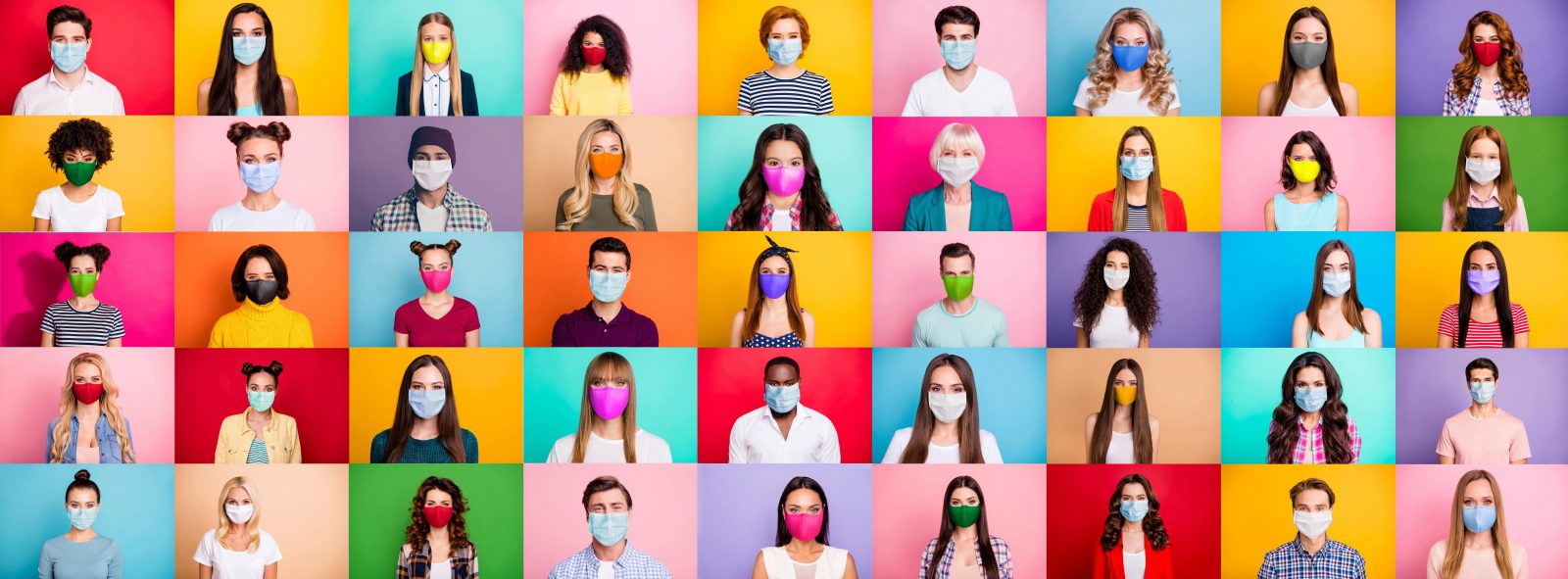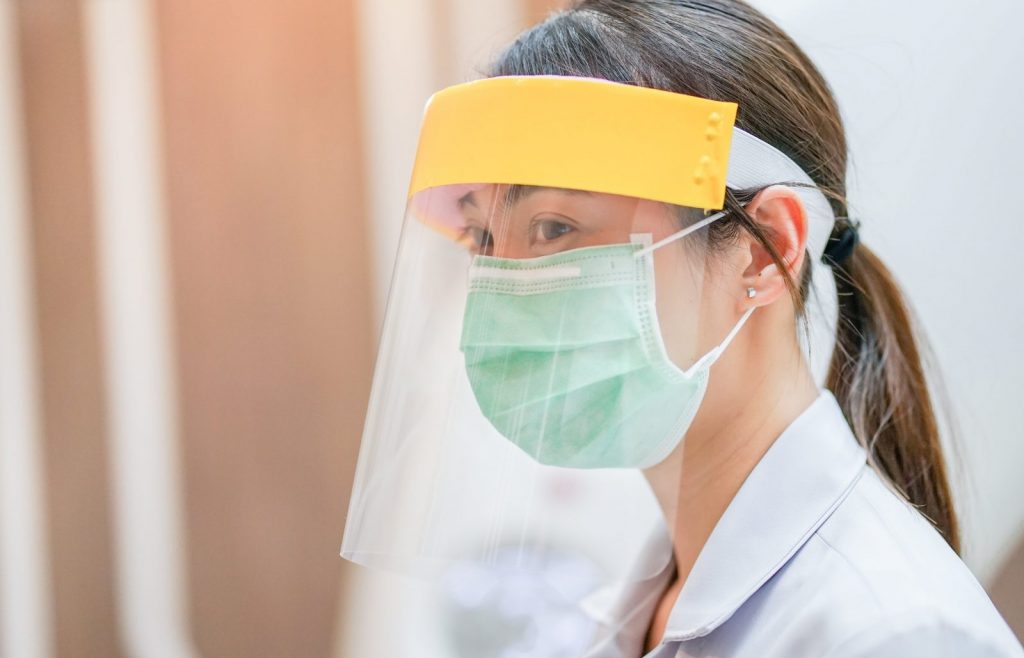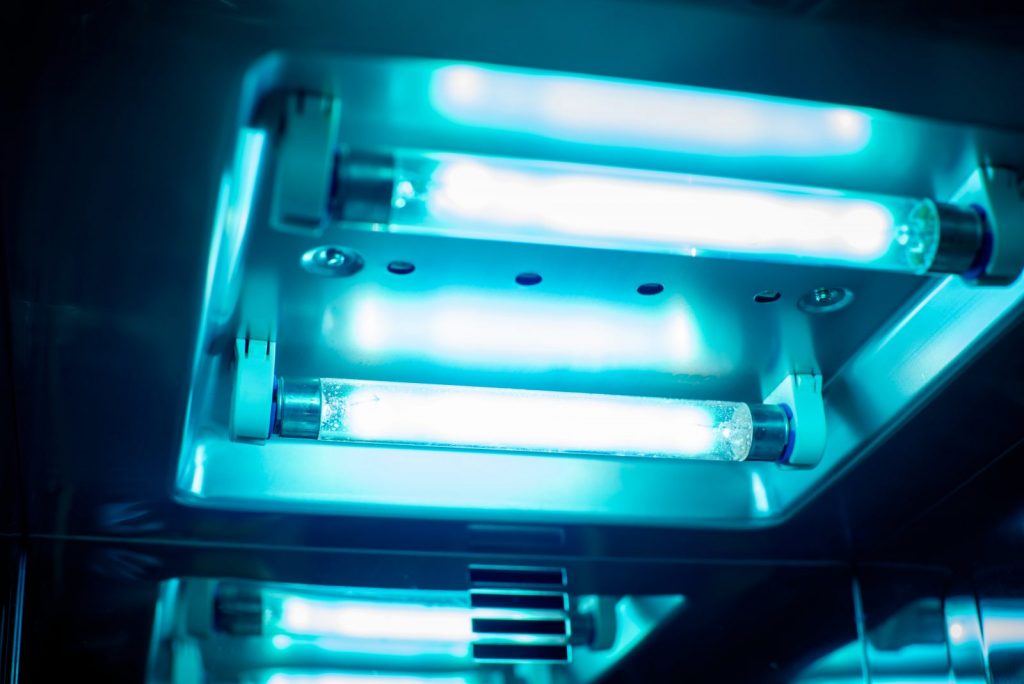
Welcome to the latest instalment of the Inivos Academic Digest for 2021, where our team shares the most interesting and thought-provoking research across microbiology, personal protective equipment (PPE), clinical decontamination, and other aspects concerning infection prevention and control.
Not only do we strive to provide a range of world-class, clinically effective automated decontamination and infection control solutions, we wish to provide a concise overview of current and relevant research. This can help create conversations that have the potential to generate solutions for better healthcare, faster.
In this overview of current research, we will explore topics covering the effectiveness of infection prevention and control measures (including PPE, proper mask-wearing and sanitisation), the first case of coinfection by severe acute respiratory syndrome coronavirus 2 (SARS-CoV-2) and Choclo orthohantavirus (CHOV), risk of infection relating to occupational risks and the risk of contracting secondary infections, multi-drug resistant pathogens, as well as the use of whole-genome sequencing (WGS) for outbreak surveillance.
Though we will not be exploring this in detail here, it is worth noting the recent announcement of the new Omicron variant. The new variant is reported to be the most highly mutated variant detected so far. It is also said to have mutations seen in previous variants of concern (VOC) associated with enhanced transmissibility and partial resistance to vaccine-induced immunity. For more information concerning Omicron, you can visit this page.

Infection Prevention and Control
In a prospective cohort study from the International Journal of Nursing Studies, researchers investigated the impact of the availability, training and correct selection of PPE on the incidence of SARS-CoV-2 infection or positive suspect cases in HCWs during the COVID-19 pandemic in Belgium. HCWs (n = 617) undertook a digital survey from May to July 2020 (period 1) and again in October 2020 (period 2). The outcome was a composite of COVID-19 status change (from negative to positive) during the study or a positive suspect case definition in period 2. The relationship between PPE availability and the composite outcome was fully mediated by PPE training (indirect path -0.105 [95% confidence interval, CI -0.211 — -0.020]; model p <0.001).
A bipartite study from Antimicrobial Resistance and Infection Control involved a single-centre retrospective cohort plus cross-sectional study to evaluate healthcare professional (HCP) COVID-19 seropositivity. Each study was conducted before universal masking and accounted for community factors and coworker outbreaks. Overall, the study concluded that before the beginning of universal masking, community and coworker exposure served as the primary drivers of HCP COVID-19 risk. The study suggested that working in dedicated COVID-19 units was negatively associated with COVID-19 seropositivity (odds ratio, OR 0.53, CI 0.30–0.94, p = 0.03). For HCPs, working in dedicated COVID-19 units was found to be protective.
A study from Plos One aimed to determine the association of the preventive health measures with the reduction of transmission of COVID-19 among people in Bangladesh. Both online and offline data were collected via a validated questionnaire from study participants (n = 1690). A total of 195 (11.5%) participants were identified with COVID-19. The risk of or chance of infection and death was significantly reduced among the participants (including health practitioners) following preventive health measures such as the use of PPE, proper mask-wearing, washing and cleaning hands by soaps/hand sanitisers, and maintaining social distancing, avoiding crowded spaces and handshaking (p = 0.001–p = 0.01).
In a study from BMC Infectious Diseases, researchers investigated the relationship of the implementation of the “Normalised Epidemic Prevention and Control Requirements” (NEPCRs) on HAIs and community-acquired infections (CAIs) in China during 2018, 2019, and 2020. When comparing HAIs and CAIs researchers found that the NEPCRs had no palpable impact on the overall rate of HAIs or on HAI-associated parameters. Lower respiratory tract infections were the most common for HAIs for all years, but more particularly in 2018 and 2019 for CAIs (p < 0.001). Analysis of HAIs by MDROs indicated MRSA infections were more common in 2020 than in 2018 and 2019 (both p < 0.05).

SARS-CoV-2: Coinfection and Infection Risk
A study from BMC Medicine estimated the risk of life-threatening secondary infections after COVID-19 and investigated whether the subsequent risk of life-threatening secondary infection is specific to COVID-19. Individuals hospitalised with COVID-19 or testing positive were selected (n = 5,151) and matched to up to 10 individuals without COVID-19 diagnosis (n = 51,402). A similarly matched cohort was constructed for individuals diagnosed with seasonal influenza. The incidence rate of life-threatening secondary infections was 2.23 (123/55.15) and 0.25 (151/600.55) per 1000 person-weeks for all patients with COVID-19 and their matched individuals, respectively. The corresponding HR of life-threatening secondary infections for patients with seasonal influenza was 4.50, (95% CI 3.34–6.08, p < 0.01).
Another study from Frontiers in Tropical Diseases reports the first case of coinfection by SARS-CoV-2 and CHOV in the locale of Panama. A 44-year-old female patient presenting with obesity exhibited gastrointestinal symptoms (on March 8, 2020) and an unquantified fever over 9 days. Symptoms persisted over a few days and chest radiography revealed increased infiltrate along with worsening symptoms. The patient was transferred from Ezequiel Abadia Hospital to the Luis “Chicho” Fabrega Hospital and admitted to the intensive care unit (ICU). Molecular tests confirmed coinfection by SARS-CoV-2 6 days after symptom onset (first positive test on March 14) and then by CHOV (positive test on March 17).
One study from the Journal of Clinical Virology Plus investigated the frequency of nosocomial infections (such as hospital-acquired pneumonia, HAP, and bloodstream infection, BSI) amongst critically ill patients with COVID-19 infection in Australian ICUs (n = 55) and evaluated associations with mortality and length of stay (LOS). A total of 490 patients with COVID-19 were included in the study. The adjusted OR for hospital mortality was 1.61 (95% CI 0.61–4.27, p = 0.3) for BSI and 1.76 (95% CI 0.73–4.21, p = 0.2) for HAP. The average adjusted ICU LOS was significantly longer for patients with BSI (p = 0.04) and HAP (p < 0.001).
A study from Healthcare (Basel, Switzerland) evaluated COVID-19 incidence and investigated the individual and occupational risk factors for SARS-CoV-2 infection in HCWs (approx n = 6,000) from a University Hospital of Northern Italy. Study data were collected between 1 March 2020–31 January 2021. The study found that COVID-19 risk was about threefold greater in nurses and nurse aides than in non-HCW (OR: 2.7; 95% CI 1.7–4.5), and about double (OR: 1.9; 95% CI 1.2–3.2) in physicians. Investigators observed a significant association between infection risk and nightshifts, particularly the total number of shifts in the whole eleven-month period (OR: 1.8; 95% CI 1.4–2.3).
Multi-drug Resistant Pathogens and Viral Outbreaks
In a study from Clinical Infectious Diseases, investigators used bioinformatics and outbreak analysis, alongside WGS to understand the antimicrobial resistance (AMR) epidemiology of multidrug-resistant Klebsiella in the Philippines between 2015 to 2017. A total of 263 extended-spectrum beta-lactamase (ESBL)-positive, and/or cephalosporin-resistant, and/or carbapenem-resistant Klebsiella isolates were selected for WGS. Overall, researchers concluded that WGS was a more specific and sensitive technique for identifying antimicrobial-resistant strains than existing epidemiological and phenotypic methods of surveillance. Three previously unrecognised local outbreaks of K. pneumoniae and K. quasipneumoniae were identified among neonates in 3 distinct areas.
Another study from Infection Prevention in Practice aimed to determine the utility of using genetic epidemiology with WGS and haplotype networks to identify nosocomial infection links in COVID-19 patients (n = 32) during an outbreak in Showa University Hospital (SUH) between mid-December 2020 and late January 2021. SARS-CoV-2 lineage B.1.1.214 was associated with the outbreak at SUH. Haplotype network analysis with single nucleotide variations (SNVs) was successful concerning patient classification. Phylogenetic tree analysis revealed three independent introductions of the virus into SUH during the outbreak. Median-joining analysis indicated that four patients were directly infected by any of the others in the same cluster.
A study from the Journal of Population Research (Canberra, A.C.T.) aimed to determine COVID-19 infection patterns (using patient data, age range 0–97 years, n = 3,107) in Thailand during an outbreak (from January 12 to May 12, 2020). Researchers recorded seven key clusters of COVID-19 outbreaks. Elderly and young male clusters were found to be most at risk at the beginning of the wave. Key clusters mediating transmission when the outbreak was more widespread were working-age male, young female, and elderly male clusters. During the late outbreak period, the general public and younger age group clusters exhibited a low risk of infectivity.

SARS-CoV-2 Sensitivity
A study from the Archives of Virology investigated the stability of a range of airborne viruses (SARS-CoV-2 [isolates of the lineages B and P.1, Brazilian variant], mumps virus, coxsackievirus B5, human rhinovirus A16, and respiratory syncytial virus) under different stress conditions, including UV-C light exposure. Concerning temperature and pH, coxsackievirus B5 exhibited reduced thermal stability at 45 °C and rhinovirus A16 and respiratory syncytial virus showed extreme sensitivity to acid conditions. SARS-CoV-2, rhinovirus A16, and respiratory syncytial virus exhibited instability in an alkaline environment. SARS-CoV-2 demonstrated extreme sensitivity to UV light after exposure to 300 mJ/cm2 for 300s.




